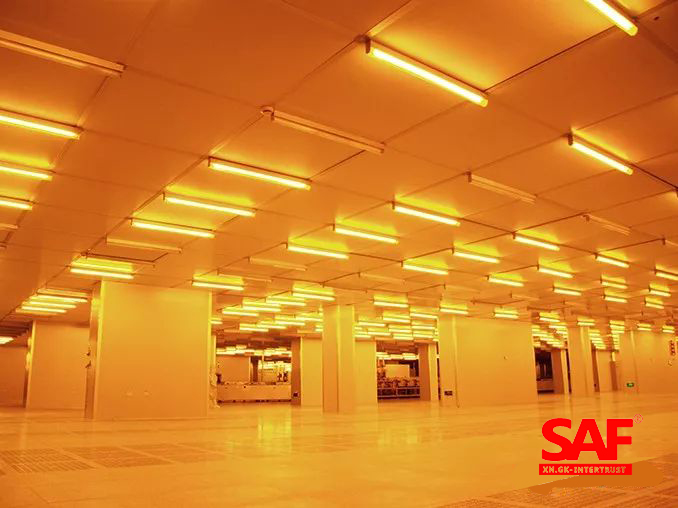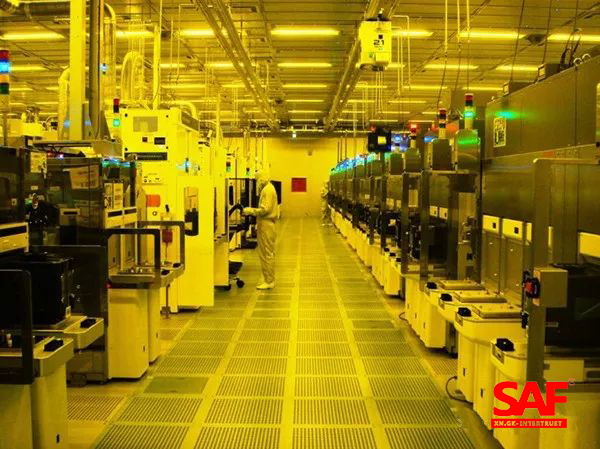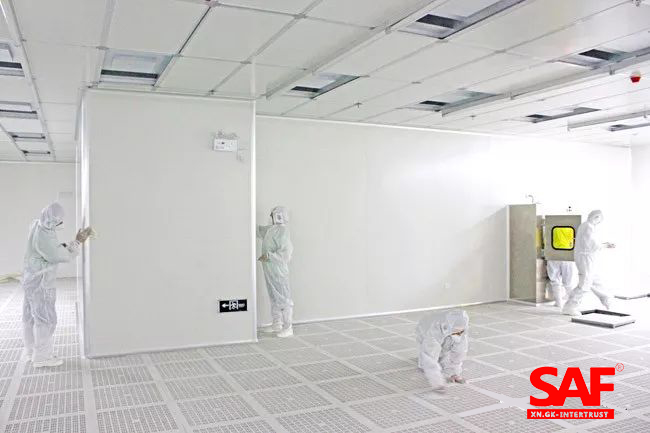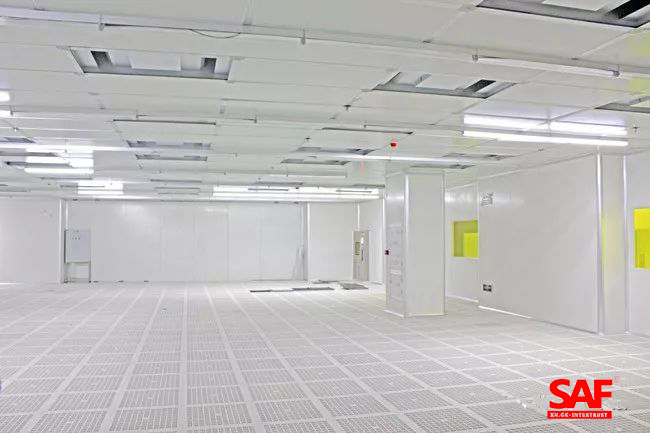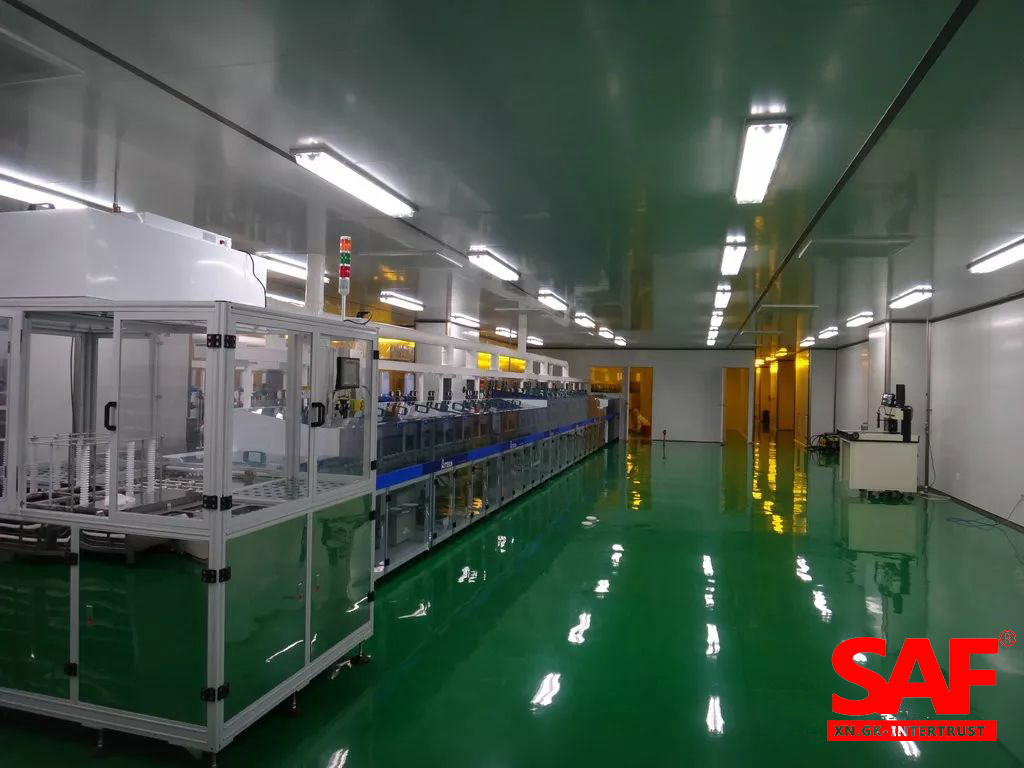The development of dust-free workshops is closely linked to modern industry and cutting-edge technology. At present, it is quite common and mature in applications in biopharmaceutical, medical and health, food and daily chemical, electronic optics, energy, precision equipment and other industries.
Air cleanliness class (air cleanliness class): A grade standard that is classified based on the maximum concentration limit of particles greater than or equal to the particle size being considered in a unit volume of air in a clean space. China conducts testing and acceptance of dust-free workshops according to empty, static and dynamic conditions, in line with “GB 50073-2013 Clean Factory Design Code” and “GB 50591-2010 Clean Room Construction and Acceptance Code”.
Cleanliness and the continued stability of pollution control are the core standards for inspecting the quality of dust-free workshops. This standard is divided into several levels based on regional environment, cleanliness and other factors. Commonly used ones include international standards and domestic regional industry standards.
ISO 14644-1 international standard—air cleanliness grade classification
|
|
|
|||||
|
|
|
|
|
|
|
|
|
|
|
|
||||
|
|
|
|
|
|
||
|
|
|
|
|
|
|
|
|
|
|
|
|
|
|
|
|
|
|
|
|
|
|
|
|
|
|
|
|
|
|
|
|
|
|
|
|
|||
|
|
|
|
|
|||
|
|
|
|
|
|||
|
|
||||||
Approximate comparison table of cleanliness levels in various countries
Indivual
/ M ≥0.5um |
|
|
|
|
|
|
|
|
|
|
|
|
|
|
|
|
|
|
|
|
|
|
|
|
|
|
|
|
|
|
|
|
|
|
|
|
|
|
|
|
|
|
|
|
|
|
|
|
|
|
|
|
|
|
|
|
|
|
|
|
|
|
|
|
|
|
|
|
|
|
|
|
|
|
|
|
|
|
|
|
|
|
|
|
|
|
|
|
|
|
|
|
|
|
|
|
|
|
|
|
|
|
|
|
|
|
|
|
|
|
|
|
|
|
|
|
|
|
|
|
|
|
|
|
|
|
|
|
|
|
|
|
|
|
|
|
|
|
|
|
|
|
Dust-free workshop (clean room) grade description
The first is the level definition model as follows:
Class X (at Y μm )
Among them, This means that the user stipulates that the particle content of the clean room must meet the limits of this grade at these particle sizes. This can reduce disputes. Here are a few examples:
Class 1 (0.1μm, 0.2μm, 0.5μm)
Class 100(0.2μm, 0.5μm)
Class 100(0.1μm, 0.2μm, 0.5μm)
In Classes 100 (M 3.5) and Greater (Class 100, 1000, 10000….), generally one particle size is sufficient. In Classes Less than 100 (M3.5) (Class 10, 1….), it is generally necessary to look at several more particle sizes.
The second tip is to specify the status of the clean room, for example:
Class X (at Y μm ),At-rest
The supplier knows very well that the clean room must be inspected in an At-rest state.
The third tip is to customize the upper limit of particle concentration. Generally, the clean room is very clean when it is As-built, and it is difficult to test the particle control ability. At this time, you can simply lower the upper limit of acceptance, for example:
Class 10000 (0.3 μm <= 10000), As-built
Class 10000 (0.5 μm <= 1000), As-built
The purpose of this is to ensure that the clean room still has sufficient particle control capabilities when it is in the Operational state.
Clean room case gallery
Class 100 clean area
Semiconductor clean rooms (raised floors) are often used in Class 100 and Class 1,000 areas
Conventional clean room (clean area: Class 10,000 to Class 100,000)
The above are some sharings about clean rooms. If you have more questions about clean rooms and air filters, you can consult us for free.
Post time: Apr-28-2024


